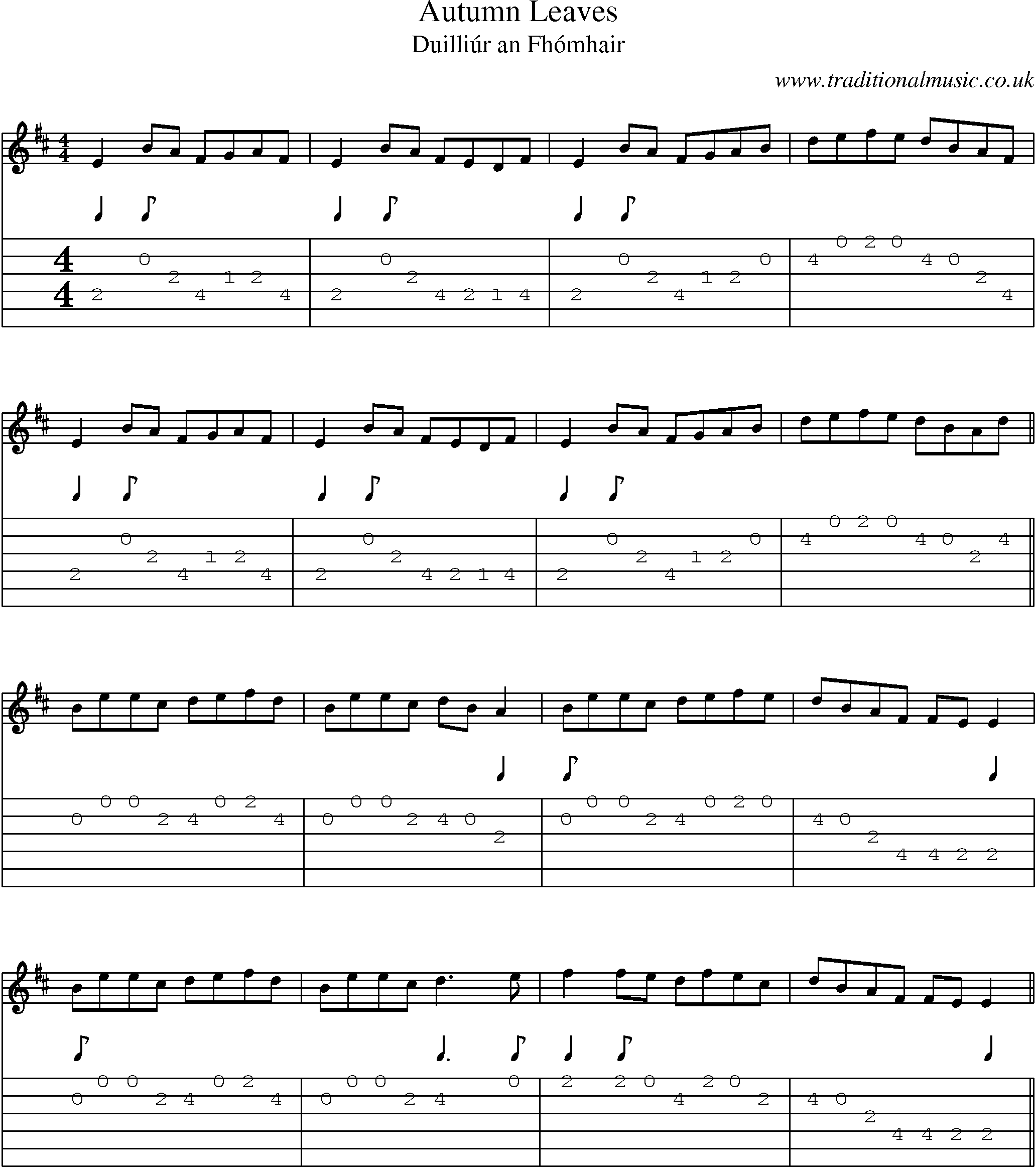Autumn Leaves Solo Guitar Pdf Tabs

AUTUMN LEAVES SOLO TAB by Eric Clapton @ Ultimate-Guitar.Com. Autumn Leaves is a great chord progression to start improvising following the harmony. In this lesson I will go over a set of arpeggios in one position, some exercises, target notes and strategies for making solos where you can hear the harmony in the improvisation.
Autumn leaves is one of the most popular non-American jazz standards on pick-up gigs and records. It is a must-know tune for any jazz guitarist and a great choice when you want to play both chords and melody on guitar. Indeed, the chord progression is not difficult to learn and easy to play. This blog article provides an easy chord melody arrangement to play the famous jazz tune on guitar.
This lesson runs in three steps: • Listening to instrumental and vocal versions. • Playing basic chords (drop 2 and drop 3 voicings). • Learning to play the melody. • Playing the chord-melody arrangement. Chord-melody means to play both the melody and the chords of a song (generally jazz standards) at the same time.
The main interest is that you can play alone the melody and the harmony of a tune as a pianist would do with its right and left hand. It is a wonderful technique widely used by jazz guitarists to arrange a tune. It can be very useful to add new dimension to your playing. Most of the time the original chords are extended or replaced by chords called substitutions. Mastering this guitar technique is quite difficult, that's why a beginner guitarist should have at least.
The first obvious part of the work before learning to play chord-melody on Autumn leaves is listen to some vocal and instrumental versions to help you hear the melody and understand the chord progression. Here are some suggestions in various keys: Vocal versions • ( a romantic version) • ( It's in the original key, E minor) • (The French version) • • (surprising choice by a legendary blues guitarist) Instrumental versions Now try to listen to famous jazz instrumentalists: • (trumpet) • (a sweet version on classical guitar) • (with McCoy Tyner on piano) • (with Miles Davis) • (Live in Paris). Drop 2 and drop 3 voicings The best way to understand and hear the harmony of Autumn leaves is to play basic chords using drop 2 and So let's quickly recap what are d rop voicings. These chords can be used to create beautiful and rich harmonies. They are very useful when working on orchestrations or arrangements. This technique applies to any jazz standard as it is the case in the Autumn leaves sheet below. Skini dlya winamp v vide magnitofona download. Is to take a close position chord and move the second highest note (drop 2) or the third highest note (drop 3) one octave lower to create an open chord. Drop 2 and drop 3 chords are very common in all kinds of jazz arrangements.
Many composers and arrangers have used them, especially for big bands in brass sections. However, these kinds of voicings sounds great on the guitar too.
The easy transcription with TABS and standard notation below takes the most common drop 2 and drop 3 voicings to play Autumn Leaves. The list below will help you understand which chord used in this sheet is a drop 2 and which one is a drop 3. Here they are in order of appearance: • Am7 (drop 3) • D7 (drop 2) • Gmaj7 (drop 3) • Cmaj7 (drop 2) • F#m7b5 (drop 2) • B7 (drop 3) • Em7 (drop2) • B7b9 (drop 3) • Eb7 (drop 2) • Dm7 (drop 2) • Db7 (drop 2) Autumn Leaves Guitar Chords. The second important part of this guitar tutorial will show you how to play the melody of Autumn leaves in order to understand this jazz standard more in-depth. Mastering composition ian roberts pdf merge. Remember that before learning a chord-melody for any jazz standard, make sure you know the melody in order to be more comfortable mixing the chords and the melody. Playing the melody will also help you to solo more easily over the changes previously discussed when you want to start improvising over this great jazz tune with your guitar.